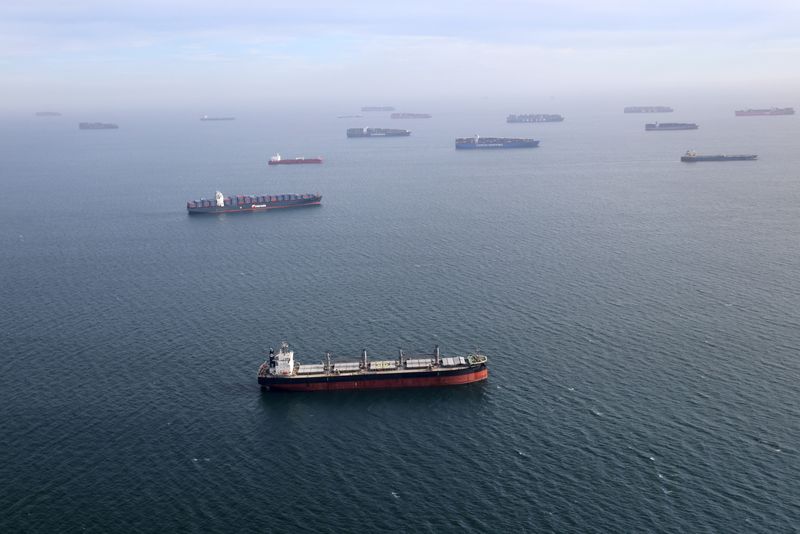By Georgina McCartney
HOUSTON (Reuters) – Fuel oil exports bound for the U.S. Gulf Coast slumped to their lowest level since January 2019 last month, a sign of weakened refinery demand as margins have softened, analysts said.
Feedstocks like high sulfur fuel oil and other heavy residues can be refined into higher value products such as gasoline and diesel using secondary units.
But loadings of those products to the Gulf Coast, America’s largest refining hub, fell by a third in August from the prior month to 260,000 barrels per day (bpd), according to data from ship tracker Kpler, marking a more than five-year low.
Cargoes departing Mexico for the Gulf Coast fell 25% month-over-month, hitting 77,000 bpd and their lowest level since July 2021, driving much of the decline, Kpler data showed.
“On the demand side, refinery margins aren’t strong enough to incentivize U.S. Gulf Coast refiners to run their secondary units harder to process this fuel oil,” said Rohit Rathhod, a market analyst at energy researcher Vortexa.
U.S. gasoline cracking margins – the spread between gasoline futures and West Texas Intermediate crude futures – typically narrows as the summer driving season draws to a close. Even so, that spread is currently at around $12 a barrel, roughly $10 a barrel below last year’s levels.
“We are seeing at least double digit percentage point reductions in secondary unit utilization, particularly on the East and Gulf Coast because of shrinking margins,” said Rommel Oates, founder of refinery operations intelligence firm, Refinery Calculator.
Refinery Calculator expects this trend to spread more broadly across other U.S. refineries over the next few months, weighing on August fuel oil loadings.
Gulf and East Coast combined operating refining capacity accounted for just under 60% of total U.S. capacity as of June 2024, according to an analysis of the most recent data from the Energy Information Administration.
ATTACKS HINDER FLOWS
Fuel oil deliveries from east of Suez to the U.S. Gulf Coast also fell last month as ongoing attacks on vessels crossing the Red Sea continued to push shippers to divert around the horn of Africa, avoiding the faster Suez Canal route, according to Vortexa analysts.
Yemen’s Iran-aligned Houthi militia has been disrupting global shipping to display its support for Palestinians in the Gaza conflict, targeting vessels in the Red Sea.
Two vessels carrying fuel oil, the AFRODITI and SEAMAJESTY, departed Iraq around two months ago for Louisiana and sailed around the Cape of Good Hope to avoid the Red Sea, contributing to a drop in U.S. Gulf Coast imports in August, said Vortexa’s Rathod.

“Red Sea attacks and the summer demand in the Middle East where they burn fuel oil for power generation definitely seem to have taken a toll on fuel oil imports into the U.S.,” Rathod added.
Saudi imports of fuel oil jumped to 385,000 bpd in August, Kpler data show, rising by a quarter on the month and by just over 40% on the year.










